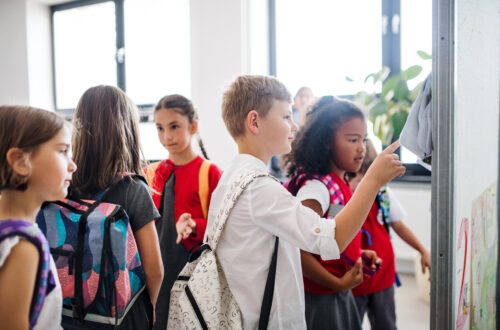
Navigating In-Flight Etiquette: How to Stay Polite When Your Peaceful Journey is Disrupted
Flying can often feel like a delicate dance in the confined space of an airplane cabin, where personal boundaries blur and comfort sometimes takes a backseat to the realities of air travel. Whether you’re settling into your seat with a book or gazing out the window, the serene anticipation of your journey can be quickly disrupted by the unavoidable interactions that come with shared travel. From chatty seatmates to unexpected turbulence, navigating in-flight etiquette can be challenging, yet it’s essential for maintaining a sense of calm and courtesy among fellow passengers. In this blog post, we’ll explore the art of politeness in the skies, offering practical tips on how to handle disruptions gracefully while ensuring your journey remains as peaceful as possible. Join us as we delve into the nuances of airplane etiquette, transforming potential frustrations into moments of understanding and connection.
Understanding Personal Space in the Cabin
Understanding personal space in the cabin is crucial for maintaining harmony during your flight. Airplanes, by nature, have limited room, making it easy for tensions to rise when passengers encroach on one another’s space. The first step in navigating this delicate situation is to remember that everyone on board is there with the same goal: to reach their destination comfortably and safely.
As you settle into your seat, take a moment to assess your immediate surroundings. The standard dimensions of an airplane seat mean that personal space can feel diminished, especially when seated next to strangers. Being aware of your body language is essential; avoid sprawling into your neighbor’s area, keeping your arms and belongings within the confines of your designated space. If you need to adjust your seat back, do so gently and with a glance over your shoulder to gauge the comfort level of the passenger behind you.
If the cabin becomes crowded during boarding or disembarking, tensions can escalate. It’s important to practice patience and courtesy; allow fellow passengers to pass by without blocking the aisle or pushing your way through. If you find yourself in a situation where someone is inadvertently infringing on your personal space—such as an elbow jutting into your armrest—consider addressing the issue with a polite smile or a gentle nudge, rather than reacting with irritation.
Ultimately, maintaining a respectful attitude towards personal space in the cabin not only enhances your own travel experience but also fosters a sense of camaraderie among fellow passengers. By being mindful of your actions and their potential impact on others, you can contribute to a more pleasant atmosphere, even when the journey gets a little bumpy.
Dealing with Chatty Seatmates
Dealing with chatty seatmates can be one of the more challenging aspects of air travel, especially when you’re trying to unwind with a good book or catch up on some sleep. However, navigating this social situation with grace can help maintain a pleasant atmosphere for both you and your talkative neighbor.
First, it’s important to gauge the situation. If your seatmate initiates conversation, respond politely, but subtly signal your interest level. A smile and brief responses can encourage them to continue, while a slight shift in your body language, such as turning your shoulder slightly or focusing on your book, may indicate your desire for some quiet time.
Should the chatter continue and you find yourself overwhelmed, consider utilizing gentle but firm communication. You might say something like, “I really enjoy our conversation, but I’m hoping to catch up on some rest during this flight.” This approach demonstrates respect for their eagerness to connect while setting a clear boundary.
In cases where you’re seated next to someone who simply won’t take the hint, a more direct approach may be necessary. Politely excuse yourself from the conversation by saying, “I need to take a moment to focus on something,” and put on headphones or dive back into your reading material. Noise-canceling headphones can be particularly helpful, as they signal to others that you prefer to keep to yourself.
Remember, it’s all about balance. While being polite and engaging is part of the in-flight etiquette, prioritizing your comfort and peace of mind is equally important. With a little tact and consideration, you can navigate the nuances of chatty seatmates and enjoy your journey, even if it doesn’t start out as peaceful as you had hoped.
Handling Disruptions from Children and Pets
Traveling by air can be a serene experience, but disruptions from children or pets can sometimes make the journey a bit more challenging. When you find yourself seated near a lively child or an enthusiastic pet, it’s essential to approach the situation with kindness and understanding, as they too are navigating the skies.
First and foremost, patience is key. Children, while they may exhibit an abundance of energy, are often just excited or anxious about their adventure. If a child is crying or being particularly loud, take a moment to remind yourself that air travel can be stressful for little ones. Instead of reacting with frustration, try to focus on your own relaxation techniques, like deep breathing, to maintain your calm.
If the situation becomes unbearable, consider a polite, friendly smile or a gentle suggestion to the parent, such as, “Would it help if I distracted him/her with a game?” This approach shows empathy and can foster a sense of community among passengers. Many parents appreciate a little help, and your kind gesture could ease their stress.
When it comes to pets, especially those traveling in carriers, the same principles apply. Often, the anxiety of being in a new environment can cause dogs or cats to bark or whine. If you’re seated near a pet, try to ignore the noise, as the owner is likely doing their best to comfort them. If the pet is out of control, a simple, friendly conversation with the owner can go a long way. Asking, “Is there anything I can do to help?” can often encourage the owner to take steps to soothe their pet, fostering a harmonious atmosphere for all.
Ultimately, being considerate and understanding towards both children and pets during your flight can transform a potentially disruptive situation into a more pleasant experience. Remember, everyone on board is sharing the same journey, and a little kindness can go a long way in creating a peaceful environment, even amidst the chaos.
Navigating Food and Drink Etiquette
Navigating food and drink etiquette while flying can be particularly challenging, especially in the confined space of an airplane cabin. Whether you’re savoring a meal from the airline’s catering service or enjoying your own snacks, it’s essential to remain courteous to your fellow passengers and crew. First and foremost, consider the aromas of what you’re consuming. While you may love the scent of your homemade curry or spicy tuna rolls, others in close proximity might not share your enthusiasm. Opt for neutral-smelling foods that won’t disrupt the airspace around you.
When it comes to beverages, be mindful of spills—an inadvertent splash of soda on a neighbor’s lap can turn a peaceful flight into a tense situation. If you choose to order a drink from the flight attendants, remember to say “please” and “thank you,” acknowledging their efforts in making your journey comfortable. If you’re indulging in a few beverages of your own, remember to keep consumption moderate. Overindulgence not only affects your behavior but can also disrupt others’ experience.
Lastly, be conscious of noise—whether it’s the sound of crunching chips or the slurping of noodles, try to engage in quiet eating practices. If you’re traveling with companions, engage in hushed conversations, keeping your volume down out of respect for those around you. By adopting these mindful practices, you can enjoy your in-flight dining experience while contributing to a more pleasant atmosphere for all passengers on board.
As we conclude our exploration of in-flight etiquette, we hope you found our tips to be both insightful and practical for your next airborne adventure. Flying can often feel like a tightly choreographed ballet where every move matters, and by approaching interactions with consideration and grace, you can help foster a more pleasant travel experience for everyone on board. Whether you encounter a loquacious seatmate or need to navigate an unsettling bout of turbulence, embracing the art of politeness can transform your journey from a collection of disruptions into an opportunity for connection and camaraderie. So, the next time you buckle up and prepare for takeoff, remember these strategies and let them guide you in creating a harmonious atmosphere in the skies. Safe travels, and may your flights always be filled with understanding and respect, as you enjoy what’s happening around you on your voyage.



